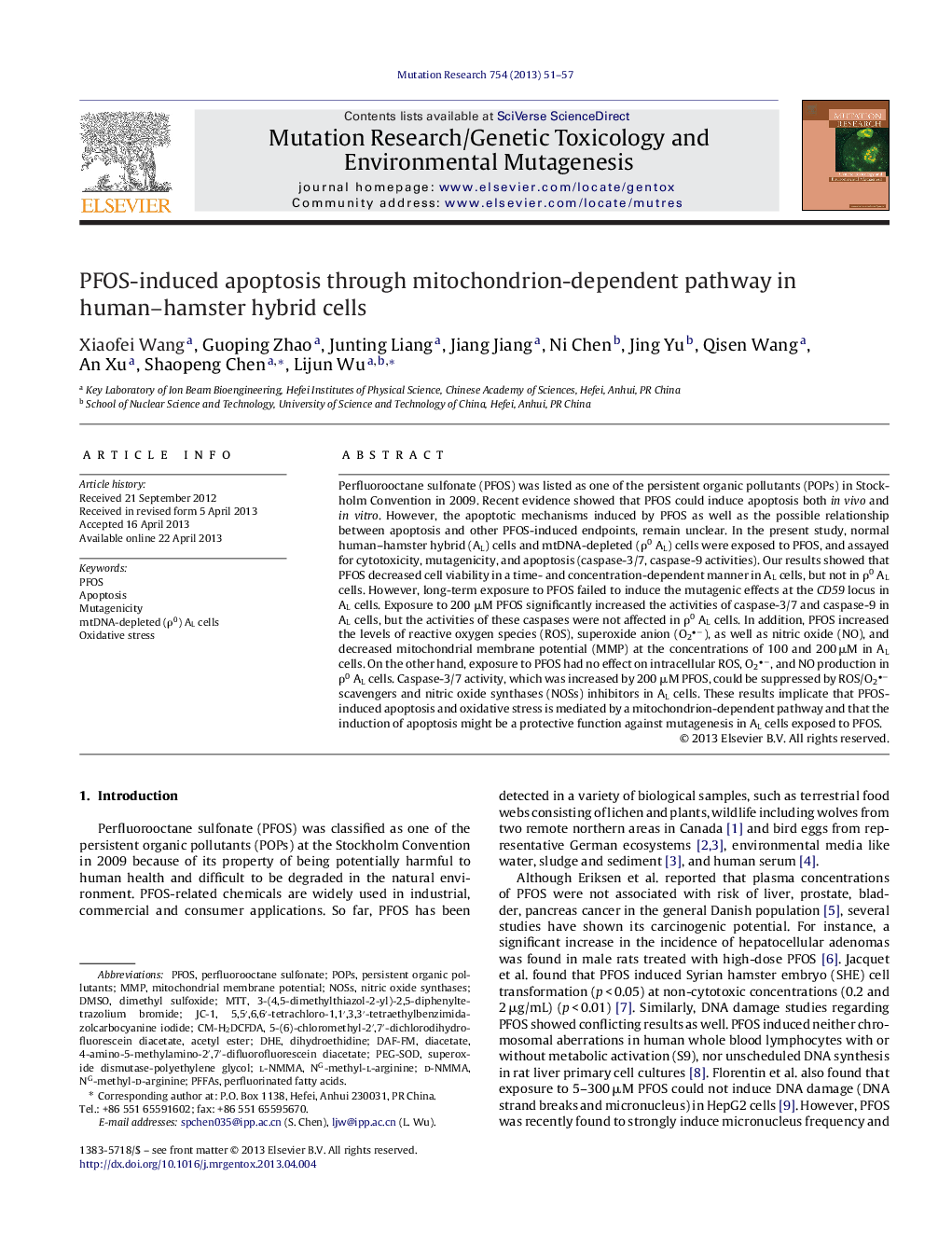| Article ID | Journal | Published Year | Pages | File Type |
|---|---|---|---|---|
| 8456533 | Mutation Research/Genetic Toxicology and Environmental Mutagenesis | 2013 | 7 Pages |
Abstract
Perfluorooctane sulfonate (PFOS) was listed as one of the persistent organic pollutants (POPs) in Stockholm Convention in 2009. Recent evidence showed that PFOS could induce apoptosis both in vivo and in vitro. However, the apoptotic mechanisms induced by PFOS as well as the possible relationship between apoptosis and other PFOS-induced endpoints, remain unclear. In the present study, normal human-hamster hybrid (AL) cells and mtDNA-depleted (Ï0 AL) cells were exposed to PFOS, and assayed for cytotoxicity, mutagenicity, and apoptosis (caspase-3/7, caspase-9 activities). Our results showed that PFOS decreased cell viability in a time- and concentration-dependent manner in AL cells, but not in Ï0 AL cells. However, long-term exposure to PFOS failed to induce the mutagenic effects at the CD59 locus in AL cells. Exposure to 200 μM PFOS significantly increased the activities of caspase-3/7 and caspase-9 in AL cells, but the activities of these caspases were not affected in Ï0 AL cells. In addition, PFOS increased the levels of reactive oxygen species (ROS), superoxide anion (O2â), as well as nitric oxide (NO), and decreased mitochondrial membrane potential (MMP) at the concentrations of 100 and 200 μM in AL cells. On the other hand, exposure to PFOS had no effect on intracellular ROS, O2â, and NO production in Ï0 AL cells. Caspase-3/7 activity, which was increased by 200 μM PFOS, could be suppressed by ROS/O2â scavengers and nitric oxide synthases (NOSs) inhibitors in AL cells. These results implicate that PFOS-induced apoptosis and oxidative stress is mediated by a mitochondrion-dependent pathway and that the induction of apoptosis might be a protective function against mutagenesis in AL cells exposed to PFOS.
Keywords
MMPd-NMMAPEG-SODNOSSNG-methyl-l-arginineCM-H2DCFDA5,5′,6,6′-tetrachloro-1,1′,3,3′-tetraethylbenzimidazolcarbocyanine iodideL-NMMAJC-1DAF-FMPFOS3-(4,5-dimethylthiazol-2-yl)-2,5-diphenyltetrazolium bromideDMSOMTTPOPsPersistent organic pollutantsOxidative stressMutagenicityApoptosisDihydroethidineDimethyl sulfoxideNitric oxide synthasesPerfluorooctane sulfonateDHEMitochondrial membrane potential
Related Topics
Life Sciences
Biochemistry, Genetics and Molecular Biology
Cancer Research
Authors
Xiaofei Wang, Guoping Zhao, Junting Liang, Jiang Jiang, Ni Chen, Jing Yu, Qisen Wang, An Xu, Shaopeng Chen, Lijun Wu,
